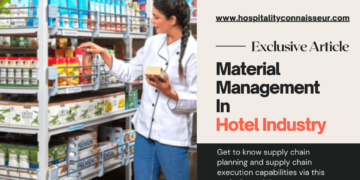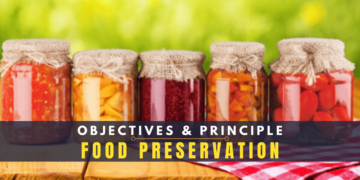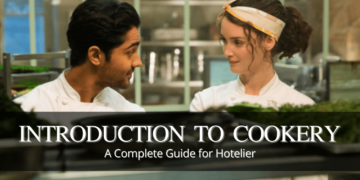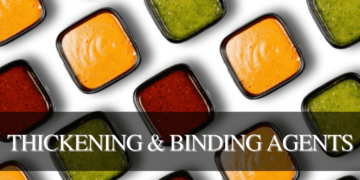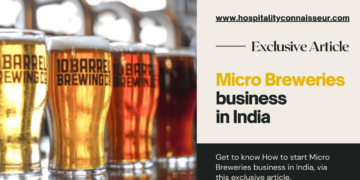By,
Mr. Manan Chakraborty.
Guest Contributor – Hospitality Connaisseur.
LinkedIn
Table of contents
- By,Mr. Manan Chakraborty.Guest Contributor – Hospitality Connaisseur.LinkedIn
- What is Molecular Gastronomy?
For years, a new culinary trend called “Molecular Cooking” has been touted as the most exciting development in haute cuisine. Molecular Gastronomy is now the newest fashion for chefs to offer their customers fake caviar made from sodium alginate and calcium, burning sherbets, spaghetti made from vegetables and instant ice cream, fast-frozen using Liquid Nitrogen. Explore this article to learn about Popular Molecular gastronomy Recipes, Popular Molecular gastronomy products and Speciality Ingredients used In Molecular gastronomy.
What is Molecular Gastronomy?
Molecular Gastronomy is a branch of food science that focuses on the physical and chemical processes that arise when cooking. These processes and interactions are explored and manipulated to yield flavourful, functional and artistic results.
Despite having a huge impact on other aspects of our lives, scientific advances have done little to change our cooking habits. When it comes to preparing food—the most important aspect of our life from a physiological point of view—citizens in developed countries still cook almost the same way as their ancestors did centuries ago.
The term Molecular Gastronomy has gained a lot of publicity over the past few years, largely because some chefs have started to label their cooking style as Molecular Gastronomy (MG) and claimed to be bringing the use of scientific principles into the kitchen.
MG is distinct from traditional Food Science as it is concerned principally with the science behind any conceivable food preparation technique that may be used in a restaurant environment or even in domestic cooking from readily available ingredients to produce the best possible result.
There are a number of different ingredients used in Molecular Gastronomy as Gelling, Thickening or Emulsifying agents :
Another name for sodium alginate, algin is a natural gelling agent taken from the cell walls of certain brown seaweed species.
Calcium chloride, also known as CaCl2, is a compound of chlorine and calcium that is a by-product of sodium bicarbonate (baking soda) manufacturing. At room temperature it is a solid salt, which is easily dissolved in water. It is also used in molecular gastronomy in the Spherification technique for the production of ravioli, spheres, pearls, and caviar.
Calcium lactate is a calcium salt resulting from the fermentation of lactic acid and calcium. It is a white crystalline power when solid and is highly soluble in cold liquids. It is commonly used as a calcium fortifier in various food products including beverages and supplements. In molecular gastronomy, it is most commonly used for basic Spherification and reverse Spherification due to the lack of bitterness in the finished products.
Like calcium chloride, calcium lactate is used alongside sodium alginate. In regular Spherification, it is used in the bath. It is also used as a thickener in reverse Spherification.
Carob bean gum is another name for locust bean gum. It is often used to stabilize, texturize, thicken and gel liquids in the area of modern cuisine, although it has been a popular thickener and stabilizer for many years.
Carrageenan refers to any linear sulfated polysaccharide taken from the extracts of red algae. This seaweed derivative is classified mainly as iota, kappa, and lambda. It is a common ingredient in many foods. More often than not, carrageenan is found in powder form, which is hydrated in liquid before being used. For best results, carrageenan powder should be sprinkled in cold liquid and blended well to dissolve, although it may also be melted directly in hot liquids.
Classified as a weak organic acid, citric acid is a naturally occurring preservative that can be found in citrus fruits. Produced as a result of the fermentation of sugar, it has a tart to bitter taste and is usually in powder form when sold commercially. It is used mainly as a preservative and acidulent, and it is a common food additive in a wide range of foods such as candies and soda. Other than extending shelf life by adjusting the acidity or pH of food, it can also help enhance flavours. It works especially well with other fruits, providing a fresh taste.
Gellan Gum is a water-soluble, high-molecular-weight polysaccharide gum that is produced through the fermentation of carbohydrates in algae by the bacterium Pseudomonas elodea. This fermented carbohydrate is purified with isopropyl alcohol, then dried and milled to produce a powder.
Gellan gum is used as a stabilizer, emulsifier, thickener and gelling agent in cooking. Aspics and terrines are only some of the dishes that use gellan. It comes in both high-acyl and low-acyl forms. High-acyl gellan gum produces a flexible elastic gel, while low-acyl gellan gum will give way to a more brittle gel.
A temperature between 85°C and 95°C (185°F and 203°F) will start the dissolution process. Gelling will begin upon cooling around 10°C and 80°C (50°F and 176°F).
Guar gum, or guaran, is a carbohydrate. This galactomannan is taken from the seeds of the guar plant by dehusking, milling, and screening. The end product is a pale, off-white, loose powder. It is most commonly used as a thickening agent and stabilizer for sauces and dressings in the food industry. Baked goods such as bread may also use guar gum to increase the amount of soluble fibre. At the same time, it also aids with moisture retention in bread and other baked items.
Speciality Ingredients used In Molecular Gastronomy :
- Iota Carrageenan : Iota carrageenan is a hydrocolloid taken from red seaweed (Eucheuma denticulatum). It is one of three varieties of carrageenan and is used mainly as a thickening or gelling agent. Like most other hydrocolloids, iota carrageenan must first be dispersed and hydrated in liquid before use. Unlike lambda carrageenan, it is best dispersed in cold liquid. Once hydrated, the solution must be heated to about 70°C (158°F) with shear to facilitate dissolution. Gelling will happen between 40°C and 70°C (104°F and 158°F) depending on the number of calcium ions present.
- Kappa Carrageenan : Kappa carrageenan is another type of red seaweed extract taken specifically from Kappaphycus alvarezii. Like other types of carrageenan, it is used as a gelling, thickening, and stabilizing agent. When mixed with water, kappa carrageenan creates a strong and firm solid gel that may be brittle in texture. Kappa carrageenan is used in various cooking preparations including hot and cold gels, jelly toppings, cakes, breads, and pastries. When used in molecular gastronomy preparations and other dishes, kappa carrageenan should be dissolved in cold liquid. Once dispersed, the solution must be heated between 40°C and 70°C (104°F and 158°F). Gelling will begin between 30°C and 60°C (86°F and 140°F). Kappa carrageenan is a thermo-reversible gel and will stay stable up to 70°C (158°F). Temperatures beyond this will cause the gel to melt and become liquid once again.
- Locust Bean Gum : Locust bean gum, also known as LBG and carob bean gum, is a vegetable gum derived from Mediterranean-region carob tree seeds. This hydrocolloid is used to stabilize, texturize, thicken, and gel liquids in modern cuisine, although it has been a popular thickener and stabilizer for many years.
- Maltodextrin : Maltodextrin is a sweet polysaccharide that is produced from starch, corn, wheat, tapioca, or potato through partial hydrolysis and spray drying. This modified food starch is a white powder that has the capacity to absorb and hold water as well as oil. It is an ideal additive since it has fewer calories than sugar and is easily absorbed and digested by the body in the form of glucose.
- Sodium Alginate : Sodium alginate, which is also called algin, is a natural gelling agent taken from the cell walls of certain brown seaweed species. This salt is obtained by drying the seaweed, followed by cleaning, boiling, gelling, and pulverizing it. A light yellow powder is produced from the process. When dissolved in liquids, sodium alginate acts as a thickener, creating a viscous fluid. Conversely, when it is used with calcium it forms a gel through a cold process. This versatile product is soluble in both hot and cold liquids, and gels made with it will set at any temperature.
- Soy Lecithin : Soy lecithin, also called just lecithin, is a natural emulsifier that comes from fatty substances found in plant tissues. It is derived from soybeans either mechanically or chemically, and is a by-product of soybean oil creation. The end product is a light brown powder that has low water solubility. As an emulsifier, it works to blend immiscible ingredients together, such as oil and water, giving way to stable preparations. It can be whisked directly into the liquid of choice. Soy lecithin is also used in creating foams, airs, mousses, and other aerated dishes that are long lasting and full of flavour. It is used in pastries, confections, and chocolate to enhance dough and increase moisture tolerance.
- Tapioca Maltodextrin : Tapioca maltodextrin is a form of maltodextrin made from tapioca starch. It is a common ingredient in molecular gastronomy because it can be used both as a thickener and stabilizer for sauces and dressings, for encapsulation, and as a sweetener. In many cases it is also used as an aroma carrier due to its capacity to absorb oil. It is often used to make powders or pastes out of fat.
- Xanthan Gum : Xanthan gum is a food additive used as a thickening agent. It is produced through the fermentation of glucose. As a gluten-free additive it can be used as a substitute in cooking and baking. As a thickener, when used in low dosages, xanthan gum produces a weak gel with high viscosity that is shear reversible with a high pourability. It also displays excellent stabilizing abilities that allow for particle suspension.
Popular Molecular Gastronomy Products :
- Foams, Froths and Bubbles : Liquids can be stabilized with gelatin, lecithin, and other ingredients, and then used to create foams by whipping or using a special dispenser charged with nitrogen gas. A well-made foam adds an additional flavour dimension to the dish without adding bulk, and an interesting texture as the foam dissolves in the mouth.
- Espuma : Espuma is the Spanish term for froth or foam, and it is created with the use of a siphon (ISO) bottle. This is a specific term, since culinary foams may be attained through other means. Espuma is created mainly with liquid that has air incorporated in it to create froth. But solid ingredients can be used too; these can be liquefied by cooking, puréeing, and extracting natural juices. It should be noted, though, that the best flavours to work with are those that are naturally diluted. Otherwise, the espuma tends to lose its flavour as air is introduced into it.
- Foam : Foam is created by trapping air within a solid or liquid substance. Although culinary foams are most recently associated with molecular gastronomy, they are part of many culinary preparations that date back to even earlier times. Mousse, soufflé, whipped cream, and froth in cappuccino are just some examples of common foams. Common examples of “set” foams are bread, pancakes, and muffins.
- Gels : Turning a liquid, such as a vegetable juice or raspberry purée, into a solid not only gives it a different texture but also allows the food to be cut into many shapes, enabling different visual presentations. Regular gelatin can be used as well as other gelling agents, such as agar agar, which is derived from red algae.
- Brittle Gels : Brittle gels are made by diluting the gelling agent into a liquid substance such as water, milk, or a stock. This mixture is left to set to attain a gelled end product. It should be noted that the concentration of gelling agents used, as well as the amount of liquid, both affect gelation. Agar agar is a common agent used to create brittle gels. However, when combined with sugar it tends to create a more elastic substance. Low-acyl gellan gum, locust bean gum, and carrageenan also create brittle gels.
- Fluid Gels : A fluid gel is a cross between a sauce, gel, and purée. It is a controlled liquid that has properties of all three preparations. A fluid gel displays viscosity and fluidity at the same time, being thick yet still spreadable. Fluid gels behave as solids when undisturbed, and flow when exposed to sufficient agitation. They are used in many culinary dishes where fluids need to be controlled, and they provide a rich, creamy texture.
- Drying and Powdering : Drying a food intensifies its flavour and, of course, changes its texture. Eating a piece of apple that has been cooked and then dehydrated until crisp is very different from eating a fresh fruit slice. If the dehydrated food is powdered, it becomes yet another flavour and texture experience.
- Freezing : In molecular gastronomy, liquid nitrogen is often used to freeze products or to create a frozen item without the use of a freezer. Liquid nitrogen is the element nitrogen in a liquefied state. It is a clear, colourless liquid with a temperature of -196°C (-321°F). It is classified as a cryogenic fluid, which causes rapid freezing when it comes into contact with living tissues. The extremely cold temperatures provided by this liquefied gas are most often used in modern cuisine to produce frozen foams and ice cream. After freezing food, nitrogen boils away, creating a thick nitrogen fog that may also add to the aesthetic features of a dish.
- Spherification : Spherification is a modern cuisine technique that involves creating semi-solid spheres with thin membranes out of liquids. Spheres can be made in various sizes and of various firmnesses. The result is a burst-in-the-mouth effect, achieved with the liquid. Both flavour and texture are enhanced with this culinary technique.
*There are two versions of the Spherification process: Direct and Reverse.
*Direct Spherification : A flavoured liquid (containing either sodium alginate, gellan gum, or carrageenan) is dripped into a water bath that is mixed with calcium (either calcium chloride or calcium lactate). The outer layer is induced by calcium to form a thin gel layer, leaving a liquid centre. In this version, the spheres are easily breakable and should be consumed immediately. Calcium chloride and sodium alginate are the two basic components used for this technique. Calcium chloride is a type of salt used in cheese making, and sodium alginate is taken from seaweed. The sodium alginate is used to gel the chosen liquid by dissolving it directly into the fluid. This causes the liquid to become sticky, and proper dissolving must be done by mixing. The liquid is then left to set to eliminate any bubbles.
*Reverse Spherification : A calcium-containing liquid (or ingredients mixed with a soluble calcium salt) is dripped into a setting bath containing sodium alginate. Surface tension causes the drop to become spherical. A skin of calcium alginate immediately forms around the top. Unlike in the direct version, the gelling stops and does not continue into the liquid orb. This results in thicker shells so the products do not have to be consumed immediately. - Sous Vide : Sous vide is a technique in which vacuum-sealed food is slow-cooked in a water bath that is set to a certain temperature. Prepare many different types of foods, from steak to fruit.
- Deconstruction : This technique involves breaking down the elements of a dish and rebuilding the presentation. Usually, a deconstructed dish consists of multiple components of a dish that are presented together.
- Smoking : Smoke cocktails, beer, sauces, dressings, meat, and more with a smoking gun. This method creates a brief attractive presentation of smoke upon serving and leaves an aromatic flavor.
- Incorporating Edible Paper : You can add an interesting dimension to dishes with edible paper, which can be made with potato starch and soybeans. Infuse different ingredients in your edible paper recipe to add color or flavor, such as vanilla, cinnamon, fruit juice, or cinnamon.
Popular Molecular Gastronomy Recipes :
- FOAM CURRY : With agar agar, you can create a foam curry to put into a siphon, which can be dispensed onto any dish, like chicken or vegetables.
- SMOKED BEER & COCKTAILS : Fill a smoking gun with flavored wood chips or herbs to serve a smoking drink and to create an aromatic experience.
- ARUGULA SPAGHETTI : Make long strands of arugula with the help of agar agar, and serve hot or cold.
- DISAPPEARING TRANSPARENT RAVIOLI : Use round, thin edible film discs consisting of potato starch and soy lecithin to create transparent “ravioli.” Fill with any ingredient that has a low water content, like fried fish and meat or sweet fillings like dried fruits and honey.
- POWDERED NUTELLA : Prepare a hazelnut powder with maltodextrin that melts on the tongue. Top desserts, ice cream, or fruit.








